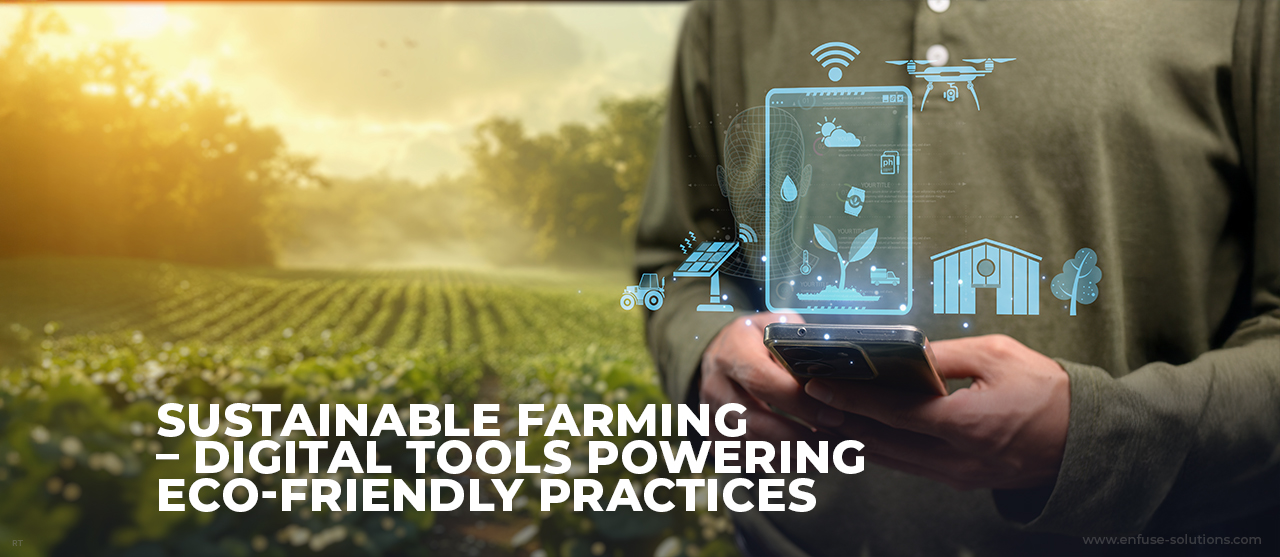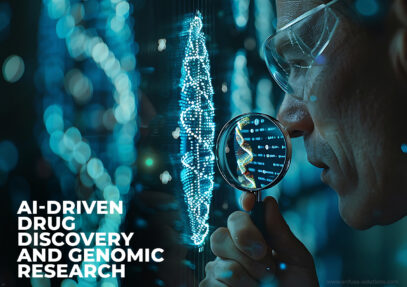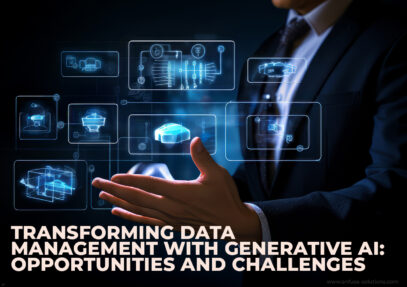
As the global demand for food production continues to rise, the agricultural sector is facing an increasing challenge: how to grow more food while reducing environmental harm. Sustainable farming, which integrates eco-friendly practices and technologies, is emerging as the answer. But it’s not just about techniques; it’s about innovation. Digital tools are transforming sustainable farming, allowing for smarter, more efficient agricultural practices that align with the needs of both farmers and the planet.
The Rise Of Sustainable Farming
Sustainable farming focuses on methods that protect the environment, support local economies, and ensure the well-being of farming communities. It embraces practices like crop rotation, reduced pesticide use, organic farming, and water conservation. However, modern challenges such as climate change, resource depletion, and a growing population demand more than traditional methods.
This is where digital tools come into play. Technologies such as artificial intelligence (AI), satellite imagery, drones, and data analytics are revolutionizing how farming is done, enabling sustainable practices at a scale and efficiency never seen before.
Digital Tools Transforming Sustainable Agriculture
1. Precision Agriculture
Digital technologies are used in precision agriculture to maximize the use of agricultural inputs such as herbicides, fertilizers, and water. By using data from sensors, GPS, and drones, farmers can manage their fields down to the square meter. With this degree of accuracy, waste is decreased, crop output is increased, and the environmental effect is reduced.
A report by MarketsandMarkets projects that the global precision farming market will reach $21.9 billion by 2031, growing at a compound annual growth rate (CAGR) of 10.7% from 2023 to 2031. This growth highlights the increasing adoption of precision tools by farmers aiming to improve both profitability and sustainability.
2. Data Analytics For Sustainable Decision-making
Data is the backbone of modern agriculture. Large volumes of data are being gathered by farmers from a variety of sources, including satellites, drones, weather stations, and soil sensors. These data sets allow for in-depth analysis, helping farmers make informed decisions about planting schedules, irrigation needs, and crop health.
The use of machine learning and AI can predict potential issues like pest outbreaks or droughts, allowing farmers to act proactively. For instance, a study from the Food and Agriculture Organization (FAO) notes that digital tools can improve water use efficiency in agriculture by up to 25%, thus directly contributing to sustainable water management.
3. IoT-based Smart Farming
The Internet of Things (IoT) has given rise to “smart farms,” where interconnected devices collect and transmit real-time data. Farmers can monitor everything from soil moisture to livestock health, ensuring more sustainable resource use. IoT-based irrigation systems, for example, can automatically adjust water distribution based on real-time soil conditions, reducing water wastage.
The global smart farming market is expected to grow from $16.2 billion in 2023 to $25.4 billion by 2028, with a CAGR of 9.4%, according to MarketsandMarkets. This trend highlights the increasing reliance on IoT for enhancing farming sustainability.
4. Drones For Sustainable Monitoring
Drones are emerging as a game-changer in agriculture. They offer an efficient and eco-friendly way to monitor large farming areas without disrupting the soil or wildlife. Equipped with high-resolution cameras and sensors, drones provide real-time aerial data on crop health, soil conditions, and pest infestations.
The use of drones reduces the need for on-field inspections, lowering carbon emissions from machinery. According to a survey by Global Market Insights, the demand for precision farming and sustainable monitoring will propel the agricultural drone industry to reach $1 billion by 2024.
Key Benefits Of Digital Tools In Sustainable Farming
- Reduced Resource Use: By accurately assessing the needs of crops and livestock, digital tools ensure that water, fertilizers, and pesticides are used efficiently. This leads to less wastage and minimizes the pollution of nearby ecosystems.
- Enhanced Crop Yield: Technologies like AI and IoT help farmers make data-driven decisions, resulting in better crop health and higher yields. According to a study by McKinsey, the adoption of AI in agriculture could increase farm productivity by up to 20%.
- Improved Soil Health: Precision agriculture technologies help maintain the balance of nutrients in the soil, ensuring long-term soil fertility. Healthy soil is critical for sustainable farming as it reduces the need for synthetic inputs and enhances biodiversity.
- Climate Change Mitigation: Agriculture both impacts and is affected by climate change. Digital tools allow farmers to minimize their carbon footprint by reducing emissions from machinery, managing energy use, and optimizing resource inputs. According to a report by the World Bank, sustainable farming practices enabled by digital technologies can reduce greenhouse gas emissions by up to 25%.
- Biodiversity Conservation: Through data-driven pest management and reduced chemical use, farmers can better protect local ecosystems. This leads to a more balanced biodiversity, which is essential for long-term farm productivity and environmental health.
Challenges To Digital Adoption In Sustainable Farming
While the benefits of digital tools in sustainable farming are clear, several challenges need to be addressed for widespread adoption.
1. Cost Of Technology
Digital tools and technology are difficult for many small-scale farmers to afford, especially in developing nations. The initial cost of implementing precision agriculture, IoT systems, and AI-powered platforms can be prohibitively high. Governments and international organizations must work together to provide subsidies, grants, and affordable solutions for farmers in these regions.
2. Digital Literacy
The success of digital farming tools depends on farmers’ ability to use and understand these technologies. Digital literacy remains a significant barrier, especially among older farmers and those in rural areas with limited access to education and training. Investing in digital training programs is essential to ensure that farmers can leverage these tools effectively.
3. Connectivity Issues
Reliable internet access is crucial for the functioning of IoT devices and data-driven platforms. However, many rural areas, particularly in developing countries, still lack robust internet infrastructure. Addressing connectivity issues is vital to ensuring that farmers everywhere can benefit from digital farming solutions.
The Future Of Sustainable Farming
The future of agriculture is undeniably digital. As the world’s population is expected to reach 10 billion by 2050, the pressure to produce more food with fewer resources will continue to grow. Sustainable farming, powered by digital tools, offers a path forward. According to the FAO, adopting sustainable farming practices could increase global food production by up to 58% without expanding agricultural land, thereby conserving forests and natural habitats.
In addition, government policies and incentives are increasingly supporting the shift toward sustainable farming. The use of digital technologies to enhance environmentally friendly farming practices is being promoted by the U.S. Department of Agriculture’s (USDA) climate-smart agriculture programs and the European Union’s Common Agricultural Policy (CAP).
Conclusion
The integration of digital tools into sustainable farming is more than just a trend – it’s a necessity. As global challenges like climate change and resource scarcity intensify, farmers must embrace innovative technologies to meet the growing demand for food while protecting the environment. Companies like EnFuse Solutions are at the forefront of this transformation, providing the data-driven insights needed to power eco-friendly agricultural practices.
By adopting digital tools, farmers can not only boost their productivity but also become stewards of the environment, ensuring a sustainable future for generations to come.

















Comment